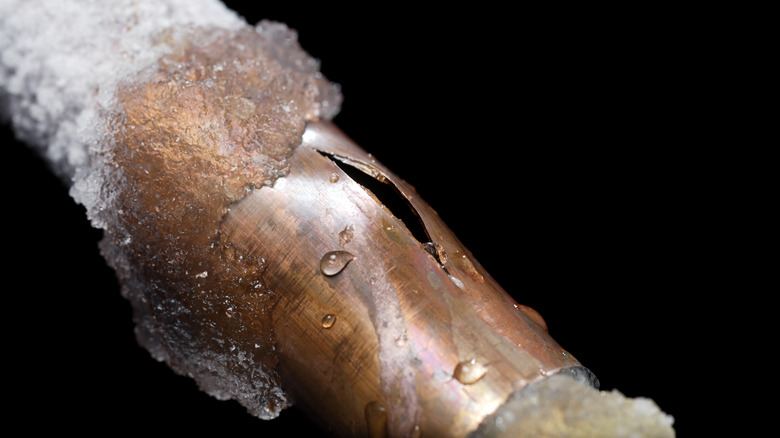Can Aluminum Foil Really Help Prevent Frozen Pipes During Winter?
When freezing temps set in, plumbing professionals advise protecting your pipes as part of your winter weather game plan. In fact, at 20 degrees Fahrenheit, it only takes a few hours before exposed pipes can start to freeze. This will cause an interruption in water flowing into your home, low water pressure, or even worse, broken pipes that require the attention of a plumber. Moreover, in many cases, burst pipes aren't covered by the homeowner's insurance. There are several things you can use to insulate pipes to avoid problems like these — and aluminum foil proves to be useful in preparing pipes before a freeze, but not on its own.
If you simply wrap your pipes in aluminum foil, though, that won't be enough to insulate them. Instead, you'll need to use other materials that have actual insulating properties. Once the pipe is covered, it can then be wrapped in aluminum foil, which will serve to keep the insulation securely in place and dry.
How to insulate pipes when prepping for freezing temperatures
First, take an inventory of how many pipes need to be insulated. This includes all pipes that are exposed, such as the ones in your garage or attic, and any located in crawl spaces. Inside the house, check for access to pipes on external walls under your sinks since you can insulate those as well. Outside faucets should also be covered.
To insulate your pipes, you'll need sleeves made of fiberglass or foam rubber, which are available at your local home improvement store. Old rags, socks, or newspapers can be subbed if you'd rather recycle something you already have around the house, but make sure you have at least 1 inch of insulation material around each pipe. If you're not using self-sealing foam pipe insulation, you can duct tape it at regular intervals to hold it in place. Then, wrap the covered pipe in foil to keep it dry.
When prepping outdoors, cover any exposed pipes and extra insulation can be wrapped around the spigot (old socks can come in handy for this purpose). Then you can wrap it in foil for additional moisture protection. You may need to investigate additional measures to take during extreme cold, but insulating and covering pipes before wrapping them with foil is a great place to start.

